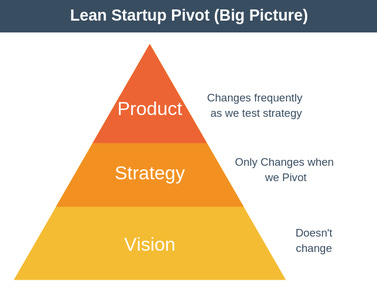Vision driven startups
Be wary of blind, spineless prototyping.
In the startup world, <The Lean Startup> is one of the most misread books of all time. This and <The Right It> by Alberto Savoia lead to a generation of young entrepreneurs who believed that they can build a successful company out of fast iterations and half-baked solutions released violently. I was one of the biggest advocates of this mindset, and my eyes rolled over whenever an execution plan wasn’t ‘lean’.
When I was PM, my biggest characteristic was the obsession over speed. I wanted launches to be daily, not weekly. I wanted executions to be hourly, not daily. I believed in uncertainty — the notion that no one can really know if a feature will work out or not, therefore every execution must be light and quick. Even when I was an engineer, I have built functioning MVPs within 4~5 days, and tried to cut features that wasn’t necessary to validate the hypothesis.
Some people have embraced this methodology to start their own project — for example, some entrepreneurs are adopting “12 ideas to validate within one year”, and they are executing one by one until there is proven success such as retention or CTRs. Those 12 ideas are often selected upon ideas that could work, instead of ideas that the founder has an emotional relation towards.
Now, I believe this approach is only half right.
“Vision driven” should be the starting point of every startup. There must be a core backbone vision within a founder. Without it, fast iteration and obsessive execution will not have a ground to stand upon. The results of those experiments stack up to nothing. Vision must come first, and then fast iteration should be applied to find a working solution to realize that vision. The prototyping mindset is good for actual iteration; it’s not for starting companies.
Specifically, founders must answer the following two questions:
“What future do you want to build?”
“Can you do this for 10 years?”
This current mantra of rapid prototyping and failing fast is bad for the startup ecosystem, as it is leading aspiring entrepreneurs to optimize into a small business instead of a world changing unicorn. It pressures founders to look for lean proof of their core hypothesis, which pressures them to resort to incremental and low level validations. This approach is only useful for a handful of easy-to-implement ideas like that of the social consumer internet era.
This is why courage is so important. The startup’s journey is a squiggly line with numerous ups and downs, and the founder’s courage towards the core vision is what keeps the whole ship afloat. The ability to think long term, the grit and hustle to endure the down times — it’s all connected to this core vision.
If you want to go big, do the “10 year test” against your ideas. Use prototyping as a flashlight, not a north star. Codify your visions first, and then bring our your validation toolkit.
If you’re interested, here’s my version of it. If these bold futures excite you, let’s connect at Twitter and LinkedIn.
The Future I Want to Build
These are the future I deeply care about. If I have created substantial worldwide impact in any of these futures, then I consider my life’s mission fulfilled. Medicine reversing the ‘irreversible’ This is one of the most hopeless problems that I know. In medicine, certain conditions are perceived as ‘irreversible’ and what’s left is passive care without ho…



